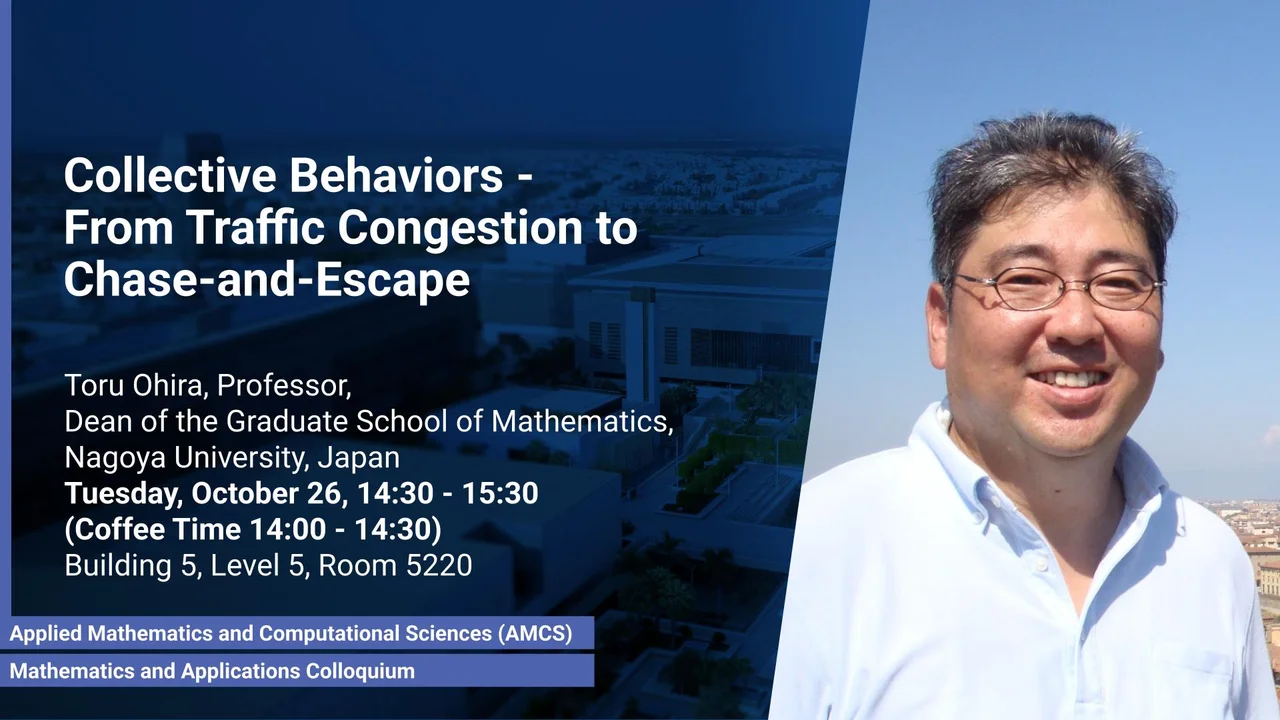
Collective Behaviors - From Traffic Congestion to Chase-and-Escape
In this lecture, we introduce representative mathematical models of collective motion, showing how they capture unexpected emergent patterns and discuss chase-and-escape dynamics, a classic topic in mathematical modeling.
Overview
Collective behaviors are observed in a wide range of systems, from traffic flows and pedestrian dynamics to animal groups and artificial agents. These systems often display emergent phenomena that cannot be explained by considering individuals in isolation. In this lecture, we first introduce representative mathematical models of collective motion, showing how they capture unexpected emergent patterns.
We then focus on chase-and-escape dynamics, a classic topic in mathematical modeling. A simple example is balancing a stick on one’s fingertips, which serves as an experimental paradigm for a one-on-one chase-and-escape process. More recently, we have proposed an extended model in which one group chases another, termed Group Chase-and-Escape. This extension connects the classical problem to contemporary studies of collective motion observed in animals, insects, vehicles, and beyond.
Presenters
Toru Ohira, Professor, Dean of the Graduate School of Mathematics, Nagoya University, Japan
Brief Biography
Toru Ohira graduated from Hamilton College (1986) and was an affiliated student at Christ’s College, University of Cambridge (1986–87). He earned his Ph.D. in Physics from the University of Chicago (1993). After working in industry, he joined Nagoya University's Graduate School of Mathematics in 2012, where he is now a professor and dean.